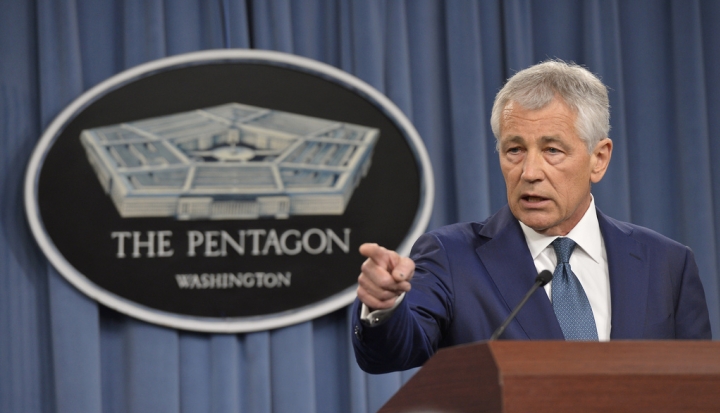Yesterday, while outlining the military budget for 2015, Secretary of Defense Chuck Hagel announced plans for the United States to decrease the size of the active duty army to its lowest levels in the post-World War II era. Under the proposed budget plan, the Army would decline to about 440,000 troops by 2019, down from a 2011 high of 566,000.
According to Hagel, the move makes sense given that the U.S. military is not likely to be waging “troop-intensive nation-building operations” anytime in the near future. Especially after the costly wars in Iraq and Afghanistan, the military has faced increasing pressure to downsize. It’s not a secret that the United States—with a 2013 military budget of more than $600 billion—spends more on its military than close to the next 14 countries combined. (This graphic from the BBC is a nice visual representation.)
Military spending is frequently cited when budget talks come up, often juxtaposed with cuts to safety net programs. Balancing the budget is a tricky act, and for each person saying we’re balancing our budget on the backs of the poor, there’s another saying we can’t balance it on the backs of “those who have sacrificed the most.”
While the downsizing is the result of belt tightening, there’s at least some acknowledgement that our current military makeup is not sustainable. During John Dear’s recent split from the Jesuits, purportedly about his attempts at working for peace, he said: “I think the nonviolent Jesus wants us — all of us — to work as best we can in these critical times for the abolition of war, poverty, nuclear weapons, and catastrophic climate change so God's reign of peace will spread.” Though the United States isn’t trying to abolish war or paint itself as a nation of peacebuilders, it could at least be a (even if unintentional) step in the direction of peace.
Image: Chuck Hagel, Flickr photo cc Secretary of Defense








